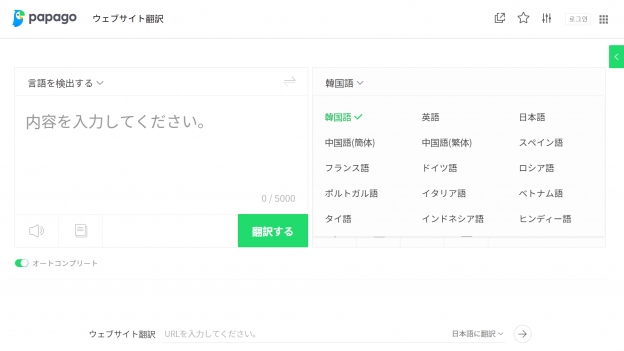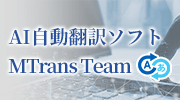
The art of translation is simple in theory but requires a great deal of skill and care to execute at high quality. A translator must have not only a firm understanding of two or more languages, but the skills of a top class writer in the language that is the translation target. They must have deep knowledge of grammar and style conventions and a mind for consistency in style, terminology, and phrasing.
Thankfully, with the advancements in technology that have arisen over the past few decades, there are many computer assisted translation (CAT) tools that translators can rely on to ease the translation process and boost the quality of the documents that they produce. In this post, I will explain the variety of ways that incorporating CAT tools like Trados and Memsource into the translation workflow is beneficial to the translation process.
1. Consistent Terminology
One of the benefits of using a CAT tool is the ability to import a bilingual glossary of important terminology, such as names, products, user interface terms, and so on. The CAT program recognizes when one of these terms appears in the source language, and automatically displays the predetermined translation on the screen conveniently alongside the translation workspace. In this way, the translator can reference the preapproved translated terms without needing to open a separate application or manually search through a bilingual list. This subsequently reduces the chance that the translator will overlook a glossary term and mistakenly translate it in a way that is inconsistent with the language requirements.
2. Consistent Phrasing
Much like the bilingual glossaries described above, entire sentences and their approved translations can be retained by a CAT tool in what’s called a “translation memory” and then automatically recalled when the same sentence appears again. Depending on the tool and its settings, exact repetitions of existing source sentences can be automatically filled by their respective translations throughout the file in bulk, not only ensuring consistent phrasing throughout the file, but also saving time that would otherwise be spent searching the document for previous iterations and then manually copying or retyping the previous text. Even if the source sentence does not match an existing translation precisely, sentences that share large similarities can be displayed adjacent to the workspace for easy reference. And for maximum benefit, the match ratio (the degree of similarity between the previous translations and current text) that acts as the threshold for displaying or automatically inserting the stored translations can be set at the translator’s discretion.
The benefit of this function is twofold. In terms of quality, the translation memory ensures that the overall style and phrasing that appear in any given translation work are unified and consistent. And because translation memories can be saved and uploaded to subsequent files and jobs, this consistency can extend beyond a single document, and can define an entire collection of translated works. Furthermore, with the integration of cloud-based CAT tools and translation memories, multiple translators can reference and contribute to a single online memory file. Therefore, even if multiple translators are working on related files simultaneously, the style and phrasing are consistent throughout all of them.
The second benefit to using a CAT tool’s translation memory function is that it is economical. In the description above, I mentioned how automatic insertion of existing translations saves time, but the reduced workload can also be reflected in the cost. Because most translations are charged by the number of words or characters in the source material, by acknowledging that some sentences are repeated or can be carried over from previous translation jobs, the total number of characters that require translation can be reduced to save money when placing a translation order with an individual, intra-company translation department, or third-party language service provider (LSP) that utilizes CAT tools.
3. Integrated Quality Assurance Tools
The third useful function that is common to major CAT tools is integrated quality assurance (QA) features. As standard, a human reviewer is necessary to ensure the accuracy of a translation and the quality of the writing in the target language. However, there are some types of errors that computer programs are better suited to checking—mistakes or non-uniformities that follow a rigid pattern and that human translators or reviewers may overlook—such as double spaces, miscopied numbers, missing opening or closing brackets, and so on.
Many writing applications contain automated spell checkers and general grammar checkers, but the QA checkers that are built into CAT tools can be configured to check for translation-specific errors as well. This includes inconsistencies with the bilingual glossary, differing translations for the same source sentence, missing font tags, and instances where the pre-programmed style guide has not been upheld. This function can be utilized without exporting the data to another application and allows even those who are less skilled in the target language to easily confirm certain aspects of the translation quality.
4. Integrated AI Translation
Machine translation (MT) and AI text generation in general have seen an enormous surge in development and use in the past few years. The quality of machine translation has skyrocketed since neural machine learning, also referred to as artificial intelligence, was applied to MT engines around 2015. While imperfect and unreliable without a human checker to ensure the accuracy and appropriateness of the translations produced, machine translation has become an important tool that LSPs can use to create a generic translation base almost instantly and thereby speed up the translation process.
In keeping with the times, major CAT tools now support the integration of MT engines such as DeepL and Google Translate, so the translation target can swiftly and automatically be populated with translated text without any risk of the data being used by third parties for further AI training. This is especially useful in the technical translation field, where the style of writing is clear, unambiguous, and straightforward. Depending on the application and the MT engine used, it may even be possible to enable utilization of the glossary terms by the integrated MT engine. As a rule, human oversight is still necessary when using machine translations, to account for context that the translation engine cannot comprehend, but having this time-saving tool conveniently built into the CAT tool that a human translator is already using is a clear benefit.
5. Translation Management
In addition to the many features that aid the process of translation itself, a number of CAT tool applications and services also provide features that assist project managers and the surrounding workflow. This can include the assignment of tasks, setting of deadlines, management of translation memories and QA profiles, creation of translator feedback, and so on. The fact that CAT tools support the overall process of placing and fulfilling translation orders, beyond just the task of language substitution, is a clear boon to the business end of translation creation.
Conclusion
Good translations require so much more than fluency with the languages involved. The style and execution of a translation is dictated by layers of cross-cultural intent and corporate need, which shape not only the style and phrasing of the text produced but the level of investment spent on the translated work. CAT tools are specifically designed to consolidate the resources that translators require, such as glossaries and QA features, together with time-saving technologies like MT and management features, to promote an optimized translation work flow that maximizes the quality of the writing at whatever level of economic investment the person placing the order is willing to make. The utilization of CAT tools may not be strictly necessary to the translation process, but the numerous benefits cannot be understated.
For more information on preparing resources for your translation orders, see
“How to Prepare a Translation Style Guide” and “What Terms to Include in a Translation Glossary”.
Or, for more info on how machine translation is influencing the translation business, check out
“Machine Translation in the Global Market”.


























